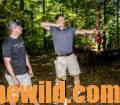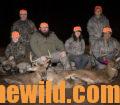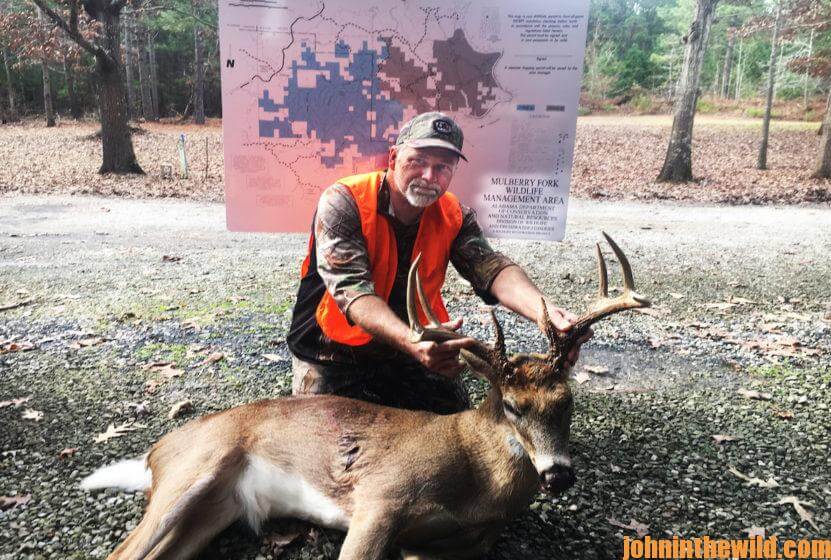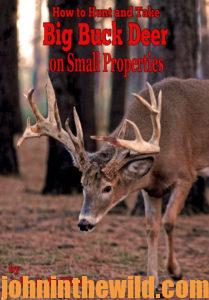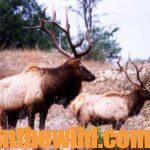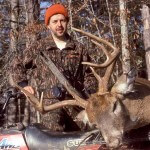Editor’s Note: One of the best ways to harvest a mature buck is to take that deer during bow season. Bowhunting’s never been easier to learn and do than today because of the legalization of the crossbow. Not only can people with disabilities use this bow, but older people, younger people and everybody in-between also can shoot accurately with only a little instruction to be ready for bow season. Too, if you prefer to shoot a compound bow because of its sighting systems and the other advantages it offers, learning to shoot the compound bow is easier now than it’s ever been. But what if you never have had the opportunity to learn how to bowhunt? How do you learn, and where can you find an instructor and/or a mentor if you’re an adult? Many states’ Departments of Conservation and Wildlife offer Adult-Mentoring Programs (AMP) on hunting like my state of Alabama does. To learn more, go to https://www.outdooralabama.com/ and click on the tab that says “Hunting” (https://www.outdooralabama.com/hunting) to see another click for the “Adult Mentored Hunting” program (https://www.outdooralabama.com/hunting/adult-mentored-hunting-program).
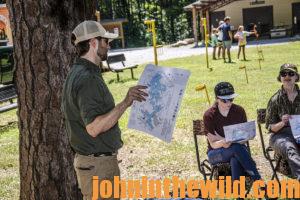 If you’re an adult coming to learn to bowhunt through this course, one of the big obstacles in many states is finding a place that you can go hunting. Luckily Alabama, like many other states, has thousands of acres of public-land hunting scattered throughout the state. However, if you don’t know where these public-land hunting areas are, you won’t know how to reach them and/or the rules and regulations for hunting there. So, even if you learn how to bowhunt, you won’t have a place to practice what you’ve learned. For this reason, the section on public-land hunting at this seminar includes what you need to know to reach properties, what the boundaries of that land are, and what are the rules and regulations of the property. But, just as important to your bowhunting success is learning who can give you more information about these particular public lands you want to hunt.
If you’re an adult coming to learn to bowhunt through this course, one of the big obstacles in many states is finding a place that you can go hunting. Luckily Alabama, like many other states, has thousands of acres of public-land hunting scattered throughout the state. However, if you don’t know where these public-land hunting areas are, you won’t know how to reach them and/or the rules and regulations for hunting there. So, even if you learn how to bowhunt, you won’t have a place to practice what you’ve learned. For this reason, the section on public-land hunting at this seminar includes what you need to know to reach properties, what the boundaries of that land are, and what are the rules and regulations of the property. But, just as important to your bowhunting success is learning who can give you more information about these particular public lands you want to hunt.
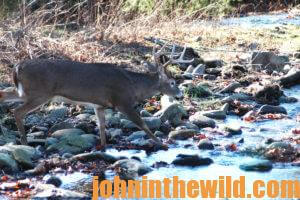 As Justin Grider, the R3 Coordinator (which stands for Recruitment, Retention and Reactivation) for Alabama’s Department of Conservation and Natural Resources (DCNR) reports, “We show our hunters where the Wildlife Management Areas (WMAs), the national forests and the Special Opportunity Areas (SOAs, are small lands hunted by random draw permits to increase the quality of the hunts) are on maps and also include the name, email and phone number of the wildlife biologist in charge of that area. So, if they have any questions, they’ve got an expert they can talk to who spends his working hours every day on that property. We want to make sure that the people who come to this course not only know how to find public lands to hunt in Alabama, but that they also learn how to hunt public
As Justin Grider, the R3 Coordinator (which stands for Recruitment, Retention and Reactivation) for Alabama’s Department of Conservation and Natural Resources (DCNR) reports, “We show our hunters where the Wildlife Management Areas (WMAs), the national forests and the Special Opportunity Areas (SOAs, are small lands hunted by random draw permits to increase the quality of the hunts) are on maps and also include the name, email and phone number of the wildlife biologist in charge of that area. So, if they have any questions, they’ve got an expert they can talk to who spends his working hours every day on that property. We want to make sure that the people who come to this course not only know how to find public lands to hunt in Alabama, but that they also learn how to hunt public 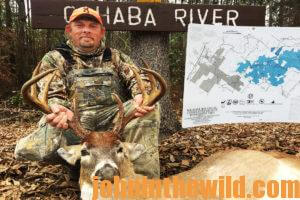 lands in any state they may visit and have a wildlife biologist contact they can talk to about their upcoming hunt on that property. In Alabama, a resident WMA license costs about $17, and you must have a state hunting license. You’ll also learn how to go on any state’s wildlife, fisheries and parks website to find public lands you can hunt, and the name and phone number of the biologist or WMA manager who’s responsible for that public- hunting land. Alabama’s WMAs encompass about 750,000 acres, however, there’s also many-more acres of national-forest land open to the public, making the total of public land available for hunting in Alabama well over more than 1-million acres.
lands in any state they may visit and have a wildlife biologist contact they can talk to about their upcoming hunt on that property. In Alabama, a resident WMA license costs about $17, and you must have a state hunting license. You’ll also learn how to go on any state’s wildlife, fisheries and parks website to find public lands you can hunt, and the name and phone number of the biologist or WMA manager who’s responsible for that public- hunting land. Alabama’s WMAs encompass about 750,000 acres, however, there’s also many-more acres of national-forest land open to the public, making the total of public land available for hunting in Alabama well over more than 1-million acres.
“In this session, students will learn everything they need to know about locating land tohunt, dates available, game that can be taken, boundary lines and any specific rules and regulations that apply only to the areas they’ve chosen to hunt. Most public-hunting lands also have camping sites, and many may have lakes, rivers, creeks or branches running through them that will be shown on a map. We encourage the participants in this course to open-up lines of communication with the wildlife biologists who are directly responsible for the game on the area they plan to hunt. These biologists probably won’t mark an X on the map as to where you should hunt, but they’ll be able to suggest some places where hunter success has been good over the last several years.”
To learn more about hunting deer, check out John E. Phillips’ book, “How to Hunt and Take Big Buck Deer on Small Properties,” available in Kindle, print and Audible versions at (http://amzn.to/1vIcj4m). You may have to copy and paste this click into your browser. (When you click on this book, notice on the left where Amazon allows you to read 10% of the book for free, and you can listen to 10% of the books for free and hear 10% for free). On the right side of the page and below the offer for a free Audible trial, you can click on Buy the Audible book.
Bowhunting 101 starts at 8 am and ends around 4 pm. To learn more about how to become a bowhunter, classes and hunts available, go to the website: https://www.outdooralabama.com/ and click on the tab that says “Hunting” (https://www.outdooralabama.com/hunting) to see another click for the “Adult Mentored Hunting” program (https://www.outdooralabama.com/hunting/adult-mentored-hunting-program). You’ll find there not only the Adult Mentored Bowhunting Deer Program but also an AMP Program for Deer, which is primarily a gun program, and AMP adult Turkey section. You’ll get the times, dates and places these programs will be conducted, learn how to register and know all the information you need to participate in any of these programs. Many states’ wildlife sections have these types of programs, so if you live in another state, you usually can call the Wildlife Division of that state to learn about their adult-mentoring programs.
Tomorrow: What Are Regulations for Bowhunting Deer

